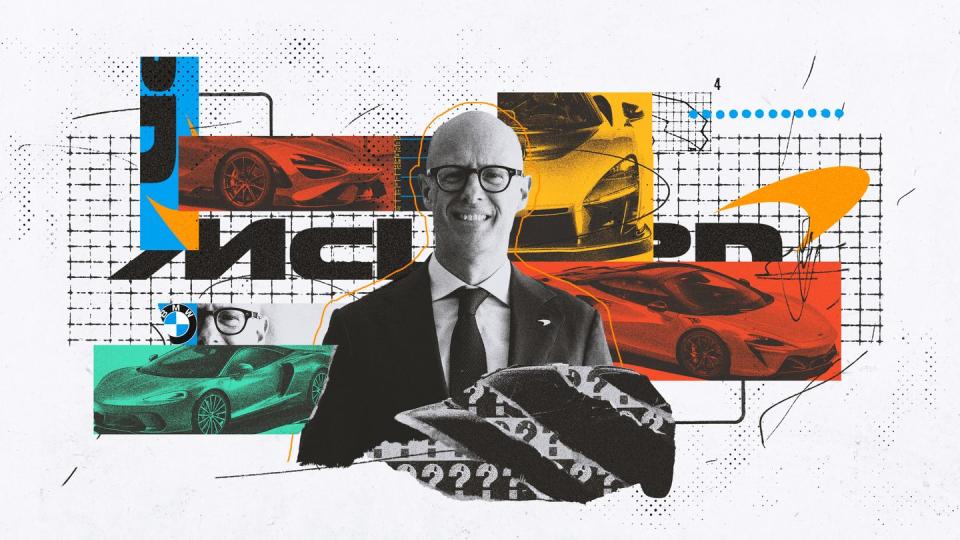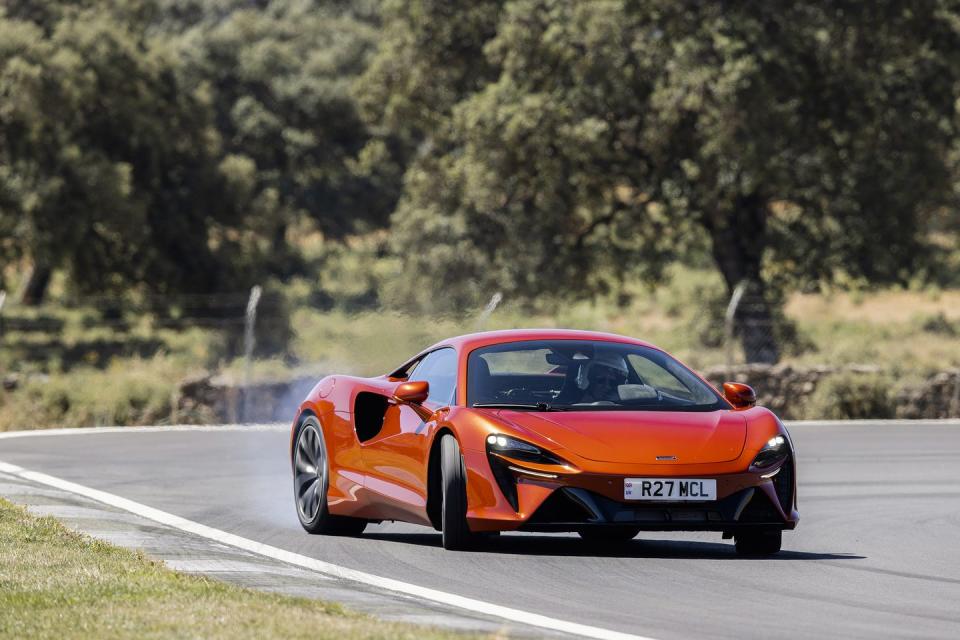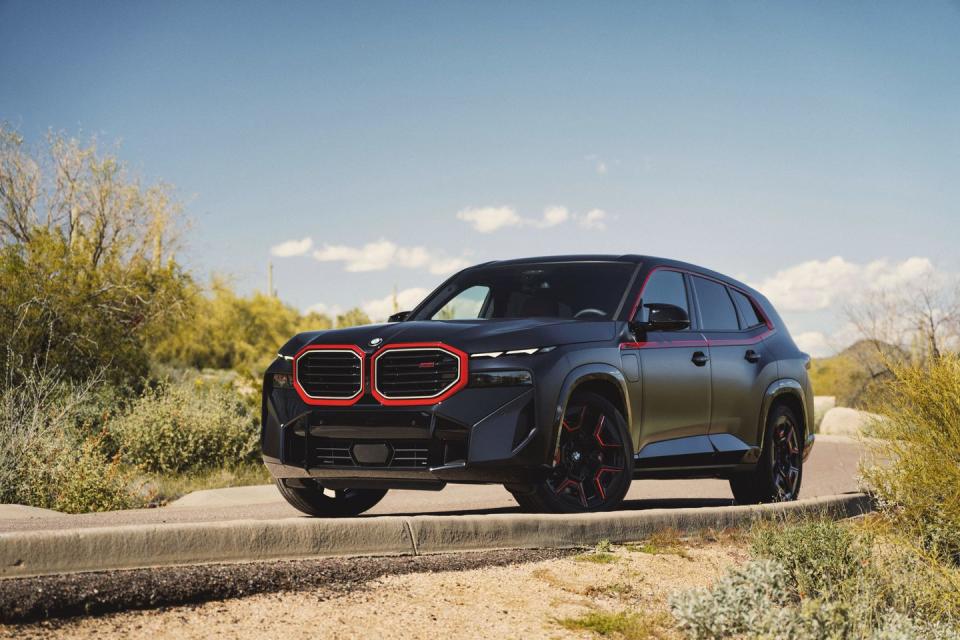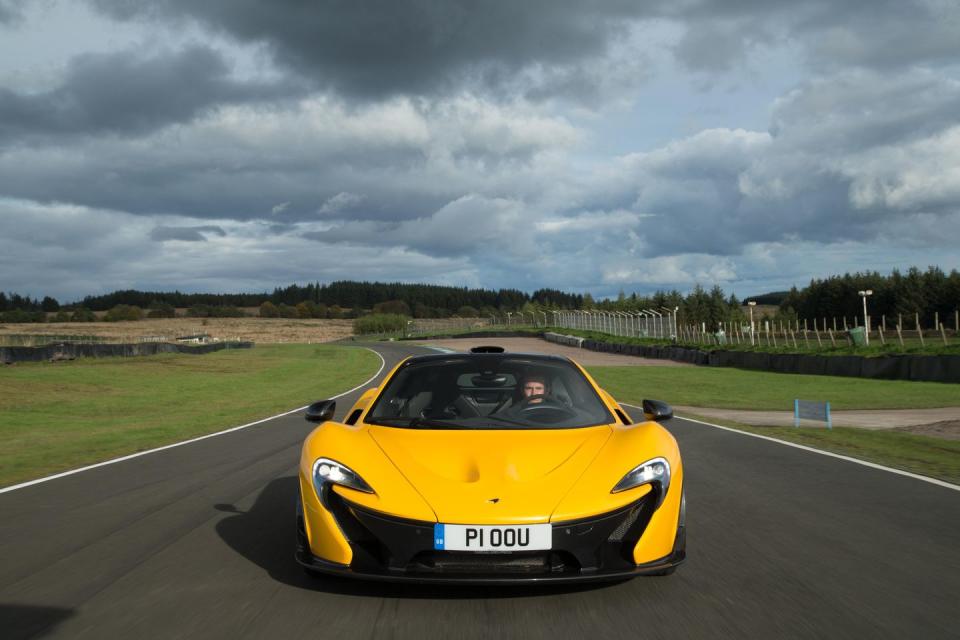Exclusive: Hybrid McLaren SUV Coming, Possible EV Supercar

McLaren Automotive’s early years were rich with success, as the supercar start-up launched what seemed to be hit after hit. The original 2012 MP4-12C felt a little clinical for such an emotion-rich part of the market, but later models such as the P1, the 675LT, the 720S, and the Senna were instant highlights. While they shared what was basically the same core architecture, they also delivered huge performance combined with scintillating driving experiences. Ferrari and Lamborghini had split the supercar market between themselves; McLaren turned it into a threesome.

But then things started to go wrong for the British company. There were product misses. The McLaren GT never convinced anyone it was a grand tourer. The roof-free, door-free Elva felt like it was inspired by the story of the emperor’s new clothes, and lack of interest in its seven-figure price led its production limit to be slashed twice. COVID brought a bigger crisis—McLaren saw its revenue collapse, shed a quarter of its workforce, and mortgaged both its space-age headquarters and its collection of heritage cars to raise cash to stay alive. Then came repeated delays of the launch of the McLaren Artura, the company’s first PHEV, followed by the abrupt departure of CEO Mike Flewitt. Sales stagnated and revenue has fallen; last year McLaren’s reported losses more than doubled to £873 million, or $1.1 billion. That, terrifyingly, is the equivalent more than a half-million dollars for each of the 2137 cars the company sold around the world in 2023.

Yet the tide may well have turned. McLaren’s need of both a new boss and a new direction was jointly answered by the arrival of Michael Leiters as CEO in July 2022. The 52-year-old German was previously Ferrari’s head of technology, and he has already made some deep organizational changes as well as overseen the much-needed simplification of McLaren’s complex (and argumentative) ownership structure. That problem was solved in March this year, when Mumtalakat, Bahrain’s sovereign wealth fund, took 100 percent control.
Leiters has also been busy planning McLaren’s future, one he hopes will take it beyond what has been its core business to this point. Last month Road & Track got the chance to visit the McLaren Technical Centre in Woking, England, for an extensive interview, one that confirmed that the new boss is not short on ideas or ambition for the company.
Most important, supercars will remain the core of the business. “We have had a very difficult year, and difficult years in the past,” Leiters acknowledges, “and we want to become a sustainable company. This is based on the segment we are in today—so supercars and ultimate cars. That is what our first focus is.”
But, as that last sentence implies, there’s more.
A McLaren SUV Is in the Works; Just Don’t Call It That
“To unlock our full potential as a company, we believe there is a second stage,” he added, “to enlarge and expand our lineup beyond the segment where we are today. We have called this ‘shared performance,’ because you can share the performance with more people than you can have in a McLaren today.”
Okay, so “shared performance vehicle” will join the growing list of euphemisms used by supercar makers reluctant to call an SUV an SUV. Leiter’s reticence on this is understandable, not least because Flewitt had publicly stated on several occasions that the company would never build an SUV. But also because McLaren could ultimately make more than one of these “SPV” models, doing so in collaboration with another automaker.
“I think the smart way is with technology partnership, to find a partner and create synergies,” Leiters says, “but not to lose anything which is core to McLaren and the DNA of our brand.”
Future Plug-In Hybrids Could Involve BMW
While earlier speculation was that McLaren would build an EV in this space, Leiters says his intention is that it will actually be a plug-in hybrid and use one of the company’s existing engines.
“If we do a PHEV, we want to understand if we can use our own powertrain,” he says of the crossover. “To integrate our powertrain into an existing platform—that would be the ideal world.”
Which presents the intriguing prospect of the XL McLaren sitting on another automaker’s core architecture, and, likely, built in one of the partner’s factories, but using either the Artura’s hybridized V-6 or, more likely, the brawnier plug-in V-8 powertrain being developed for the 750S replacement.

Leiters refused to be drawn on possible partners to achieve this reality, but McLaren, on more than one occasion, is known to have discussed collaboration with BMW—a company that, by happy coincidence, possesses an obvious platform solution with the adaptable modular architecture that underpins the V-8-powered XM PHEV. Regardless of the partner, the new McLaren will feature high levels of bespoke content and, Leiters suggests, may even have structural changes to reduce mass: “The core attribute of a McLaren is lightweight.... We have world-class competence we could bring into a partnership, even talking about structural elements of a platform.”
If it happens, the new car’s exclusivity will be assured by an appropriately serious price. Leiters says he believes a McLaren in this space would be better priced closer to the Rolls-Royce Cullinan and the Ferrari Purosangue than the Lamborghini Urus and the Bentley Bentayga. That suggests something close to the $400,000 mark.
McLaren Wants an EV Supercar That Doesn’t Weigh Two Tons
Leiters also confirms that McLaren has already begun development of an EV supercar. “We have started, and are working intensively, on a pure electric powertrain. This should define how an [electric] supercar should be,” he says. “I am convinced that the first EV supercar will be a McLaren. We understand what it means to make supercars. If we are not able to do that, then nobody else will be able to.”
That may seem like a bold statement given the (at least nominal) existence of hugely fast electric two-seaters from Rimac, Pininfarina, and Lotus. But Leiters makes clear that his definition is based on weight, not just performance.
“For me, a supercar that weighs two tons is no supercar,” he says. “It is easy to have a better power output to increase the performance. This is longitudinal performance, if you like. Acceleration. But the better question is, what is the lateral performance? You cannot deliver that if the weight is too high.”
The critical challenge, as Leiters sees it, is reducing mass to minimize the mass penalty over a combustion-powered supercar while still maintaining usable range. How close does he think a future McLaren EV could get to the weight of a PHEV supercar like the 3300-pound Artura? “Very close, very close indeed. That’s the target.”
The other challenge for an EV supercar would be finding buyers. Rimac’s recent admission that it hasn’t been able to sell the entire run of the Nevera suggests that the ultra-wealthy remain unconvinced.

“I think as a company, we have to be prepared,” he says. “What happens if one day the market changes, and the majority of customers, not the minority, are asking for [these cars]? It depends on the attributes. If you can build a really engaging, emotional product, it can work.”
Of course, combustion engines will continue to be a large part of McLaren’s future, likely all the way to an outright ban in some parts of the world. The 750S will be the last McLaren to use the MonoCell/Monocage platform the company launched 13 years ago, with all future models set to switch to the much more flexible second-generation carbon-fiber architecture that underpins the Artura. This EV supercar would sit beneath both the 750S’s replacement and the Ultimate Series hypercar, which occupies the place previously held by the P1.
Over 900 HP and RWD? Why Not?
While the most powerful models from Ferrari and Lamborghini now have electrically powered front axles, Leiters refuses to confirm whether McLaren will follow suit: “That’s a detail I don’t want to share yet.” This raises the question of how much power can really be put through a single axle on a street car. Would McLaren really go beyond the 903 hp of the rear-wheel-driven P1?
“Why not?” Leiters says. “But it has to be controllable. When we talk about the importance of emotions to the brand, a negative emotion is getting scared. I think our cars are really easy to drive, and to push our cars to the limit should not be a problem even for nonexpert drivers. I understand that traction is a question, but there is so much potential in aerodynamics, downforce, tire development, and powertrain controls. I believe there is still a lot of space.”

Another significant change has been to reduce production to protect residual values, something McLaren has struggled with through much of its history.
“I won’t speak so much about volumes but about revenue,” Leiters says. “I think if you take the volume we have done in the past, it is clear we have sometimes oversupplied the market. We won’t do that anymore, never again. We will supply to demand.”
He also agrees that McLaren was formerly too keen to boost production with limited editions—or, in the case of the 600LT, a nonlimited edition that ended up becoming the majority of sales for the later years of the Sports Series, depressing secondhand values. “The timing has to be right. The limit has to be right,” he says. “You can’t shoot out limited editions every six months. You have to give them time to create a market and a demand and an excitement, to make sure they have the right attention and respect. That is crucial.”
We have loved many McLarens and hope to fall for many more. But that will be possible only if the company finds a sustainable future. In Leiters', it possesses a CEO who possesses both vision and an appreciation of how hard it is to run at the sharpest end of the performance-car market. We really do hope he succeeds.
You Might Also Like

 Yahoo Autos
Yahoo Autos 